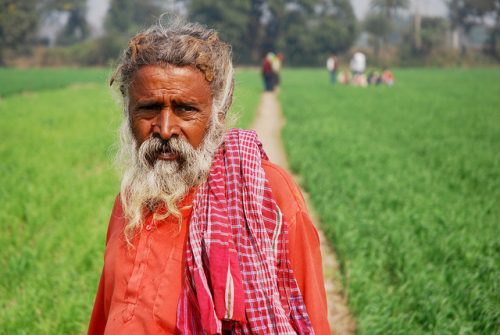
Fifty years ago, economists and population experts predicted millions were about to die from famine.
India and other Asian countries were expected by scholars like Paul Ehrlich in The Population Bomb to be especially hard hit in the 1970s and 1980s, given the region’s high population growth rates.
South Asia braced for mass starvation as hunger and malnutrition spread while multiple droughts plagued India and neighboring countries – but it never happened.
Instead, rice and wheat yields more than doubled in Asia from the 1960s to 1990s, grain prices fell, people consumed nearly a third more calories and the poverty rate was cut in half – despite the population growing 60 percent.
Improved rice and wheat varieties combined with the expanded use of fertilizers, irrigation and supportive public policies for agriculture led to this dramatic growth in food production and human development that would become known as the Green Revolution.
Today, South Asia faces new, but equally daunting challenges. By 2050, the United Nations predicts the world’s population will grow by more than two billion people, 30 percent of which will be in South and Southeast Asia. These regions are also where the effects of climate change, like variable rainfall and extreme flooding, are most dire.
Wheat, maize and rice yields in South Asia could decrease by as much as 30 percent over this century unless farmers adopt innovations to mitigate rising temperatures and changing rainfall patterns.
Agricultural leaders from across South Asia recently gathered in Dhaka, Bangladesh to create a roadmap on how to best help farmers cope with climate change while meeting future food demand.
“South Asian agriculture needs to be transformed as it was during the Green Revolution,” according to ML Jat, principal scientist at the International Maize and Wheat Improvement Center (CIMMYT) and co-author of a recent policy brief detailing the policy dialogue in Bangladesh. “Holistic management and more efficient use of resources to protect soil, water and air quality is necessary to improve both agricultural and human health.”
Public policies across the region currently subsidize agrochemicals, irrigation and unsustainable tilling, making it an uphill battle for many who promote sustainable intensification – a set of practices that adapt farming systems to climate change and sustainably manage land, soil, nutrient and water resources – as an alternative to these environmentally destructive practices.
Sustainable intensification advocates in South Asia have found that conservation agriculture – a sustainable management paradigm based on the principles of minimal soil disturbance, permanent soil cover and the use of crop rotation to simultaneously maintain and boost yields, increase profits and protect the environment – could be greatly expanded to benefit farmers across the region.
Conservation agriculture was first adopted in South Asia in the mid-1990s for no-till wheat farming and has since spread to cover more than 5 million hectares of farmland, mostly in India. Precision land levelers, machines equipped with laser-guided drag buckets to level fields so water flows evenly into soil — rather than running off or collecting in uneven land — were also adopted during this time, which significantly boosted conservation agriculture’s impact.
“When these technologies are combined with improved seed, like HD-2967, Munal, HDCSW 18, the benefits for farmers are even greater,” said Jat.
Despite this growth, conservation agriculture is practiced on just two percent of South Asia’s arable land, and very limited farmers end up adopting the complete set of sustainable intensification practices necessary to fully boost production while conserving the environment.
“While some practices like zero-till wheat have become very popular, growing rice in submerged fields remains a common practice which is one of the major obstacle in the adoption of full conservation agriculture in irrigated intensive rice-wheat systems of South Asia,” said Jat.
Policies that support farmers with few resources to take chances to experiment with conservation agriculture, such as guaranteeing a cash payout if crops fail or free access to zero-till machinery, can give people the incentive and protection they need to permanently shift the way they farm.
In addition to on-the-ground policy commitments, delegates in Bangladesh declared conservation agriculture and sustainable intensification should be at the heart of South Asia’s development agenda not only to improve national food security but to meet international obligations.
“If we don’t make South Asia’s farming sustainable, we will fail to meet international commitments on climate change, poverty and the environment, including the Sustainable Development Goals,” said Raj Paroda, Chairman of the Trust for Advancement of Agricultural Science (TAAS).
Delegates at the meeting called for a significant boost in funding towards conservation agriculture for sustainable intensification efforts, as well as the need to incorporate sustainable intensification practices in existing publicly-funded agricultural development initiatives.
Finally, the delegates created a platform where regional leaders, national agricultural research centers, donors and international research organizations can share knowledge, success stories, new technologies and expertise.
Read the full policy brief of the Scaling Conservation Agriculture for Sustainable Intensification in South Asia meeting here.

 Climate adaptation and mitigation
Climate adaptation and mitigation 
